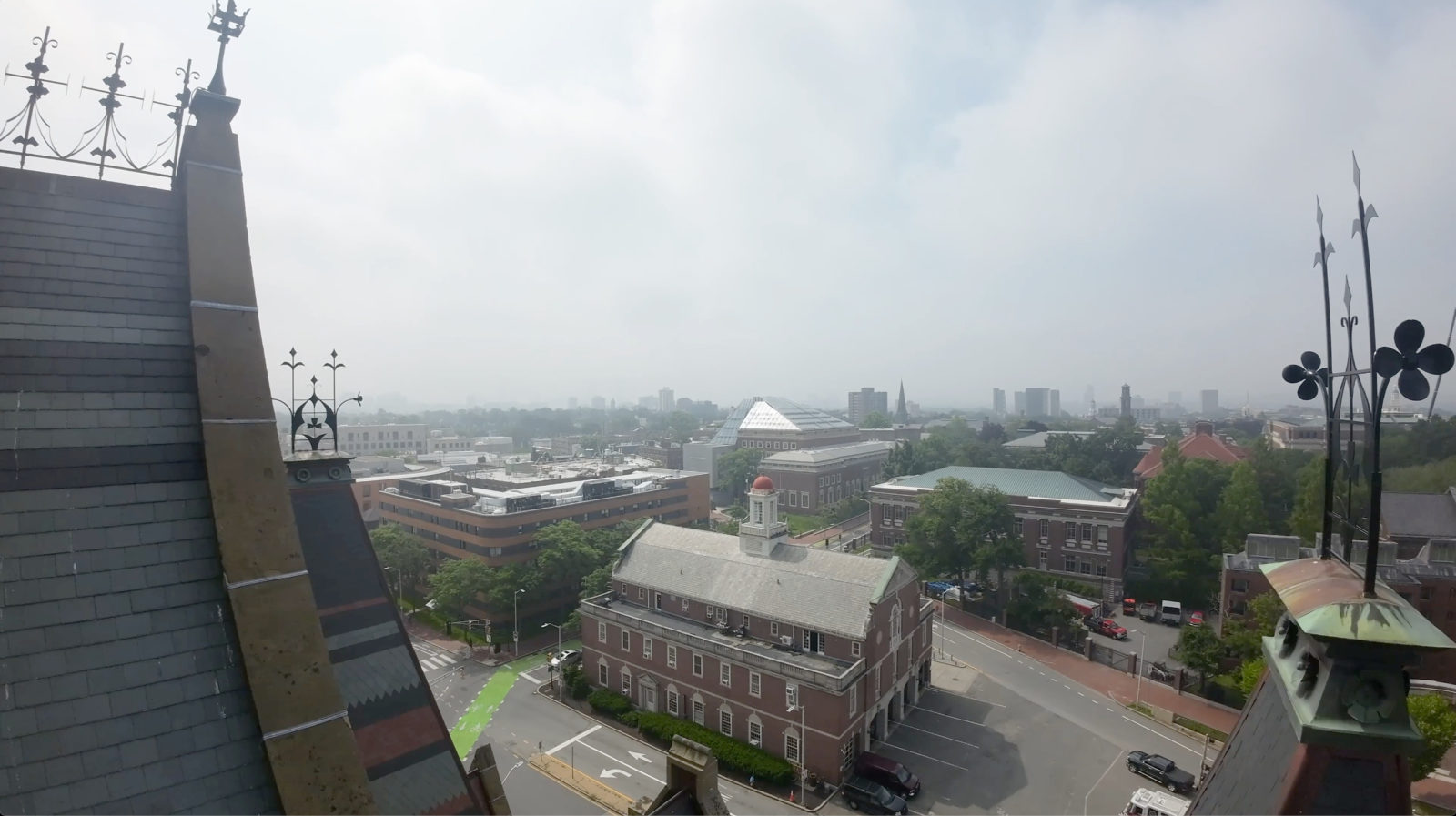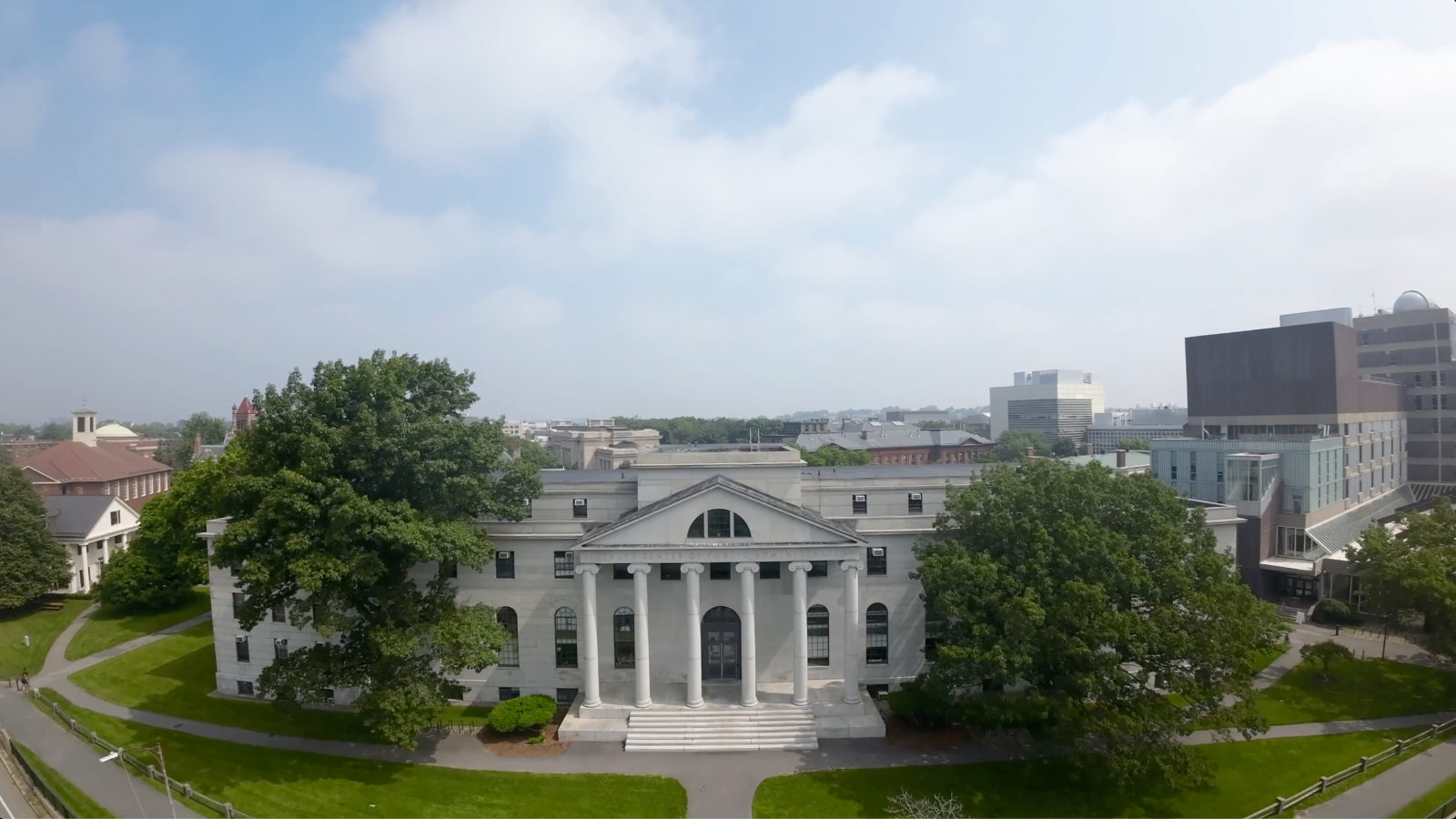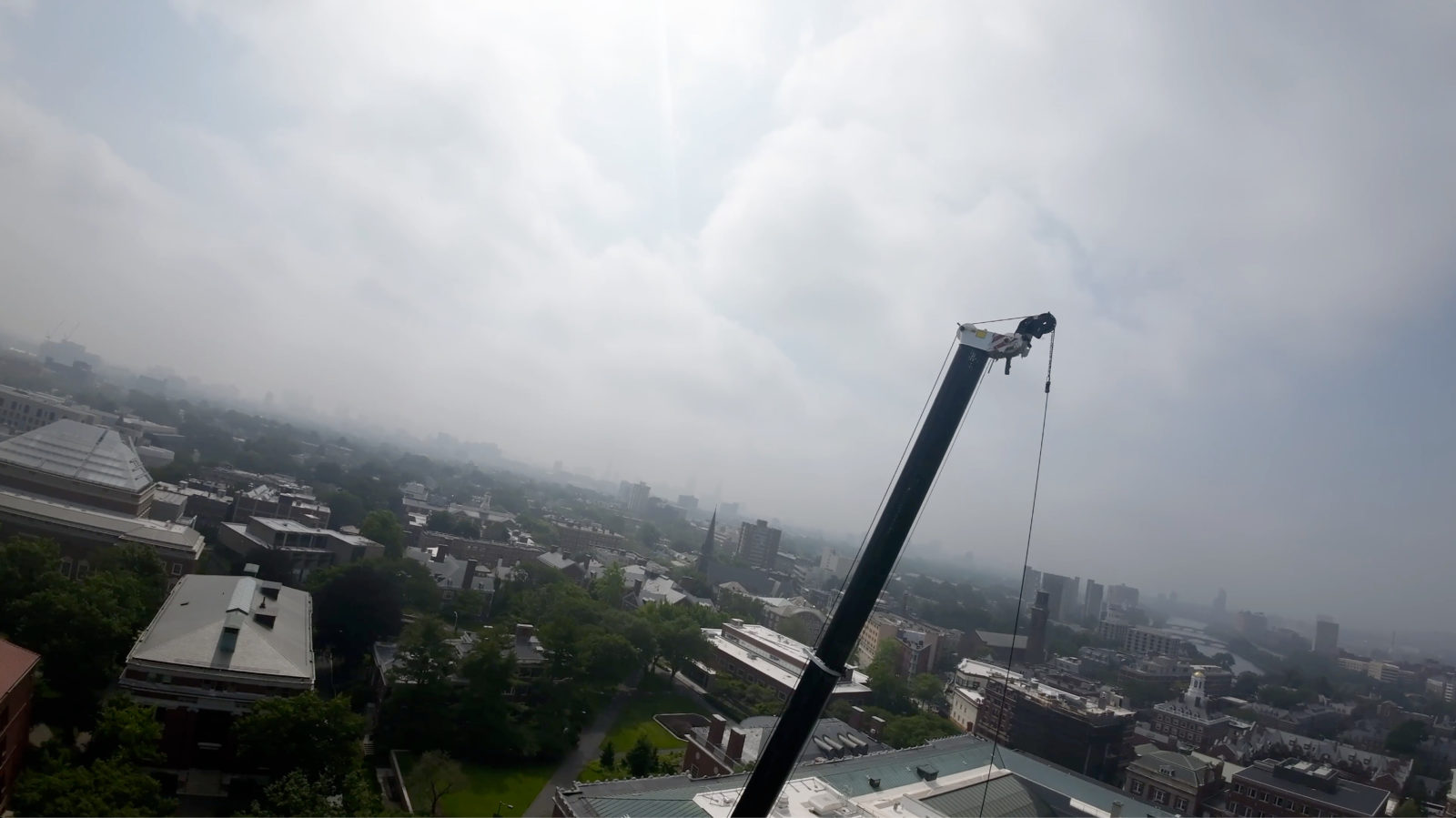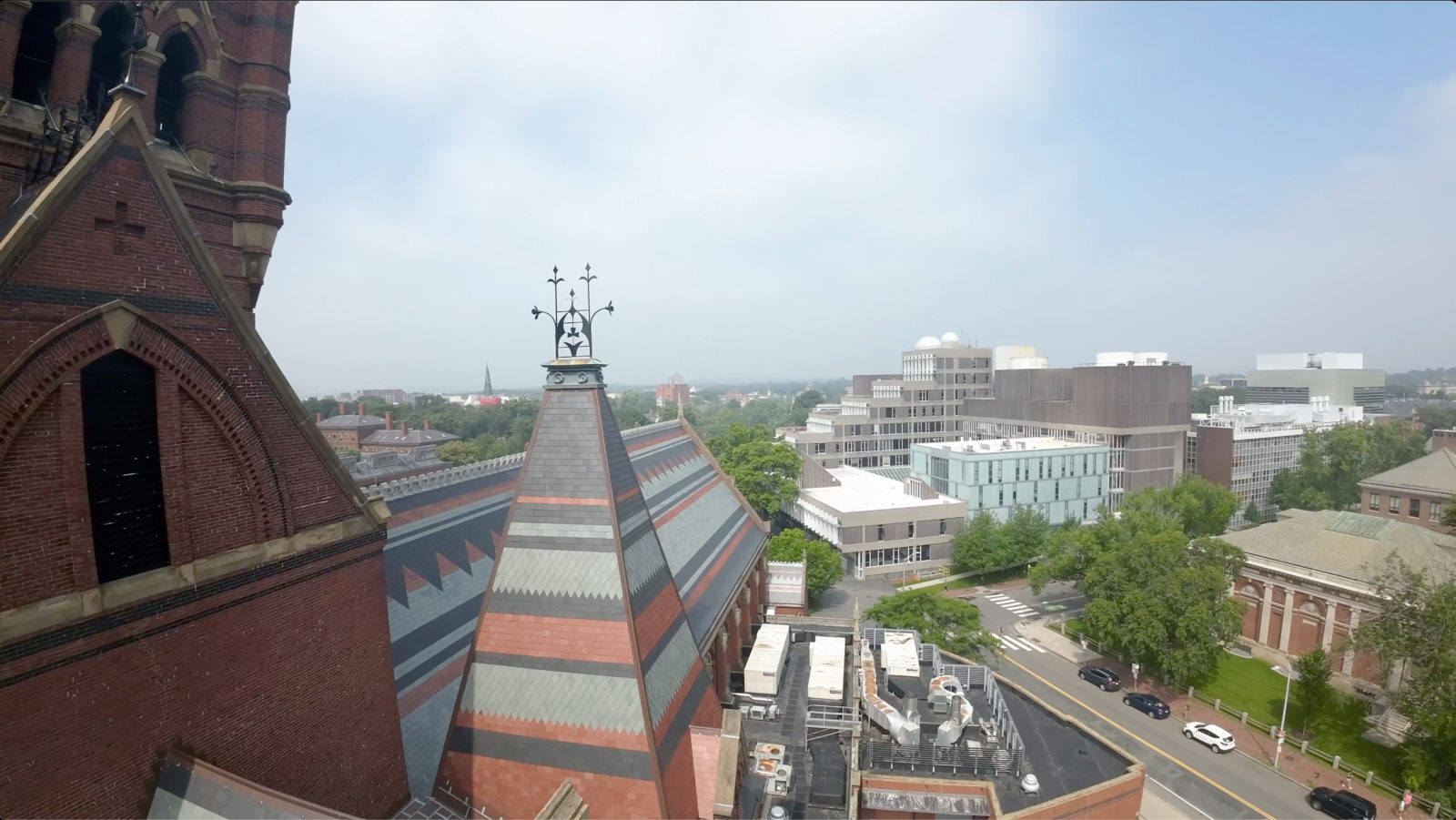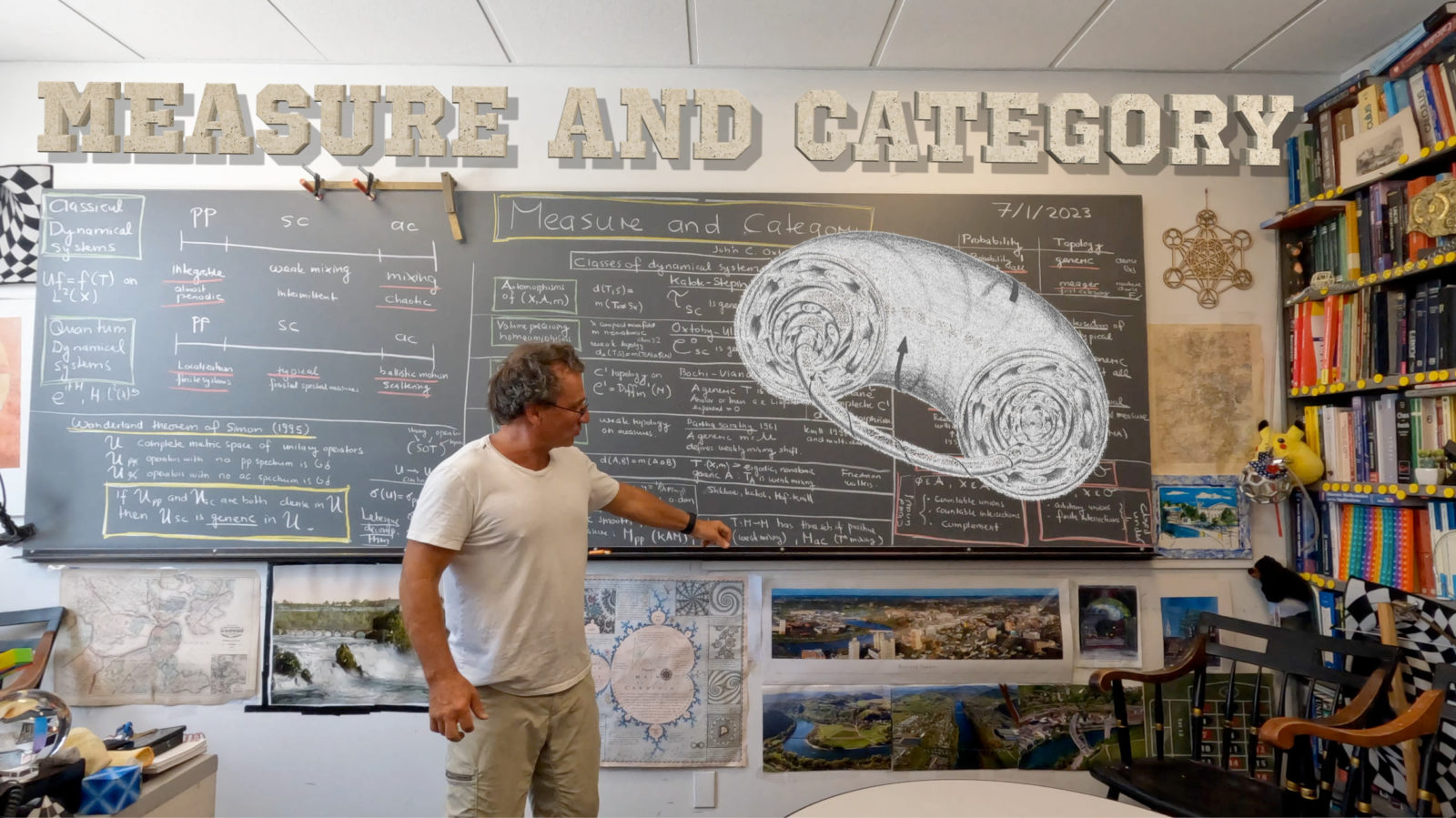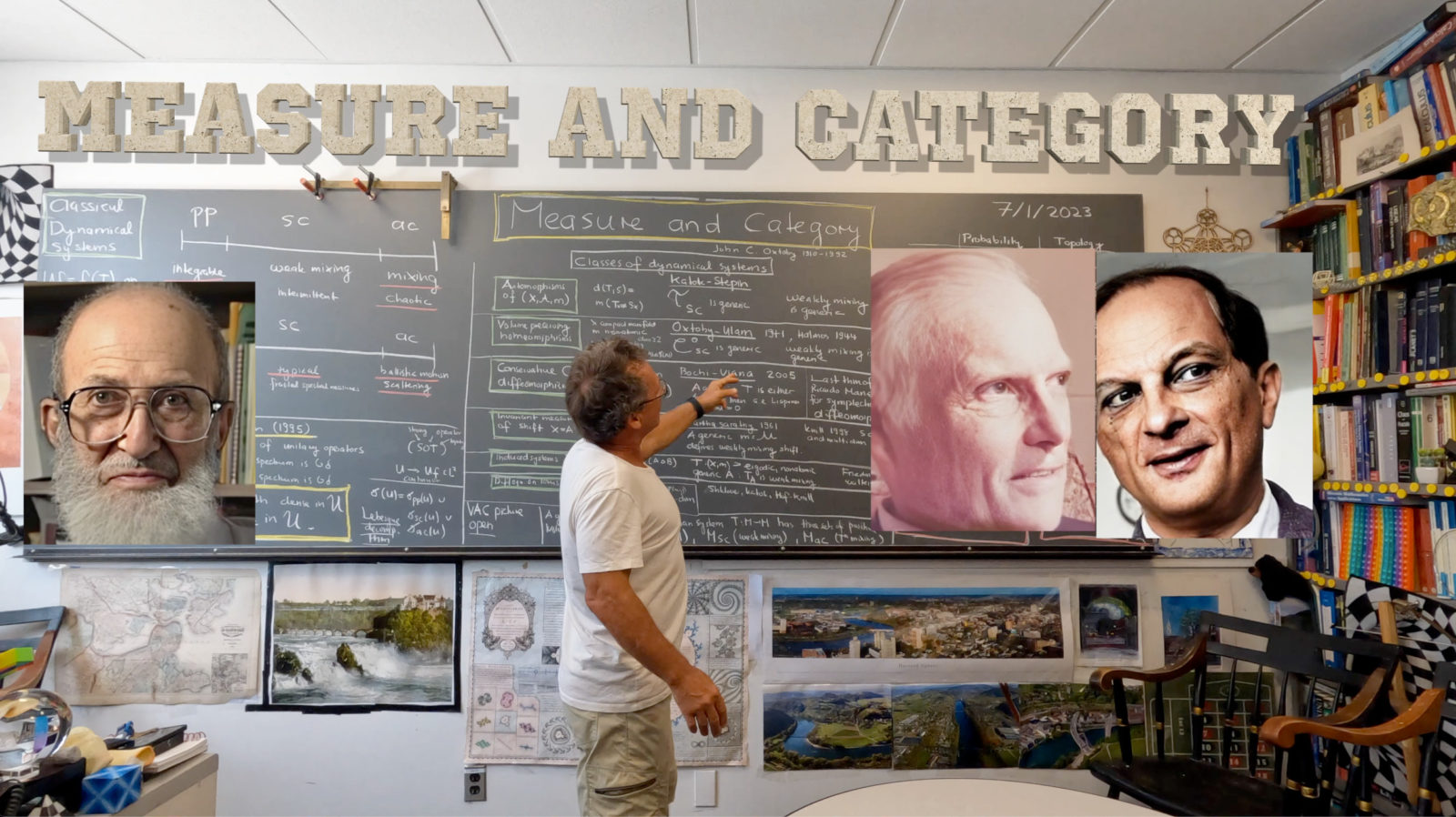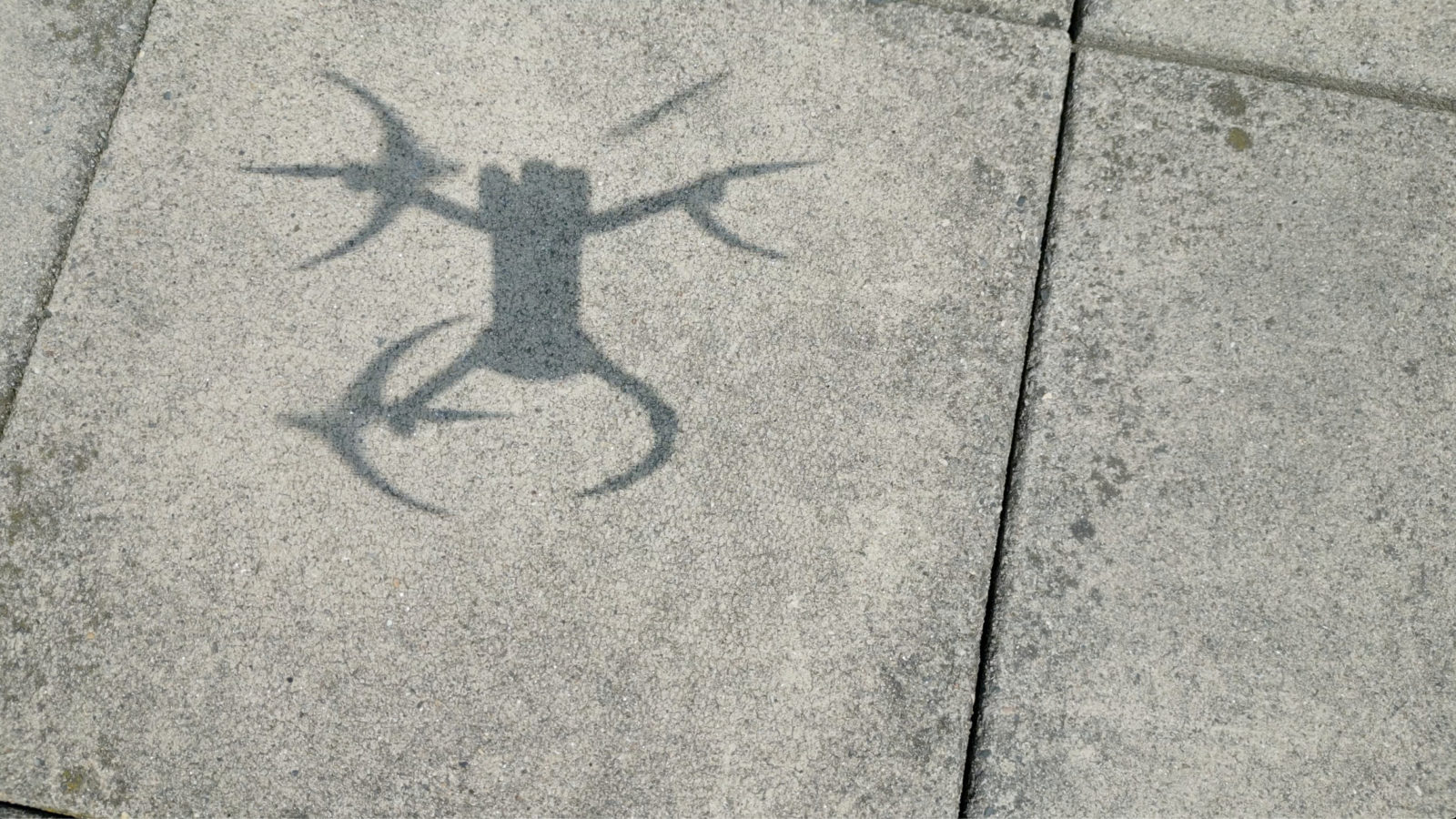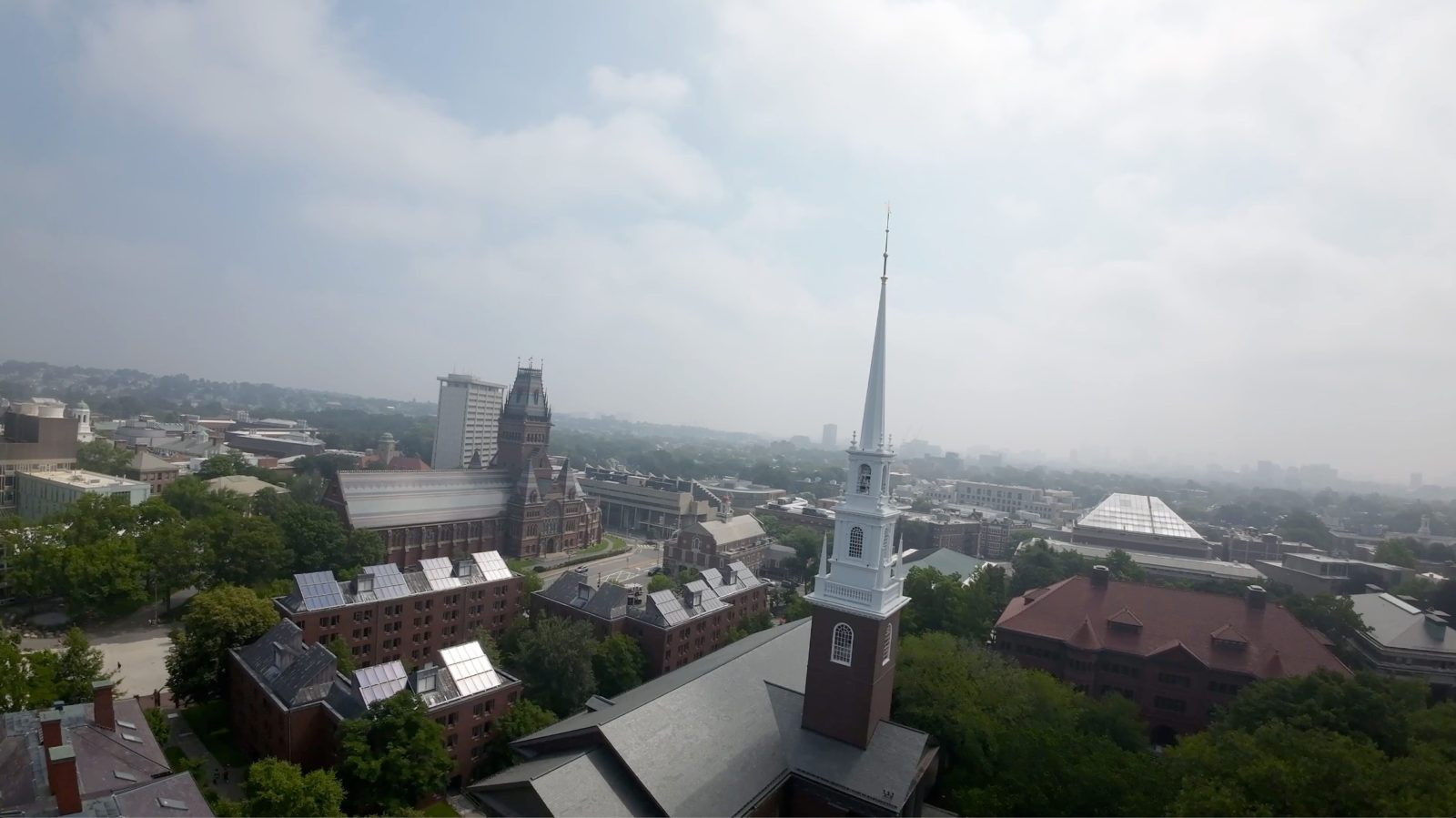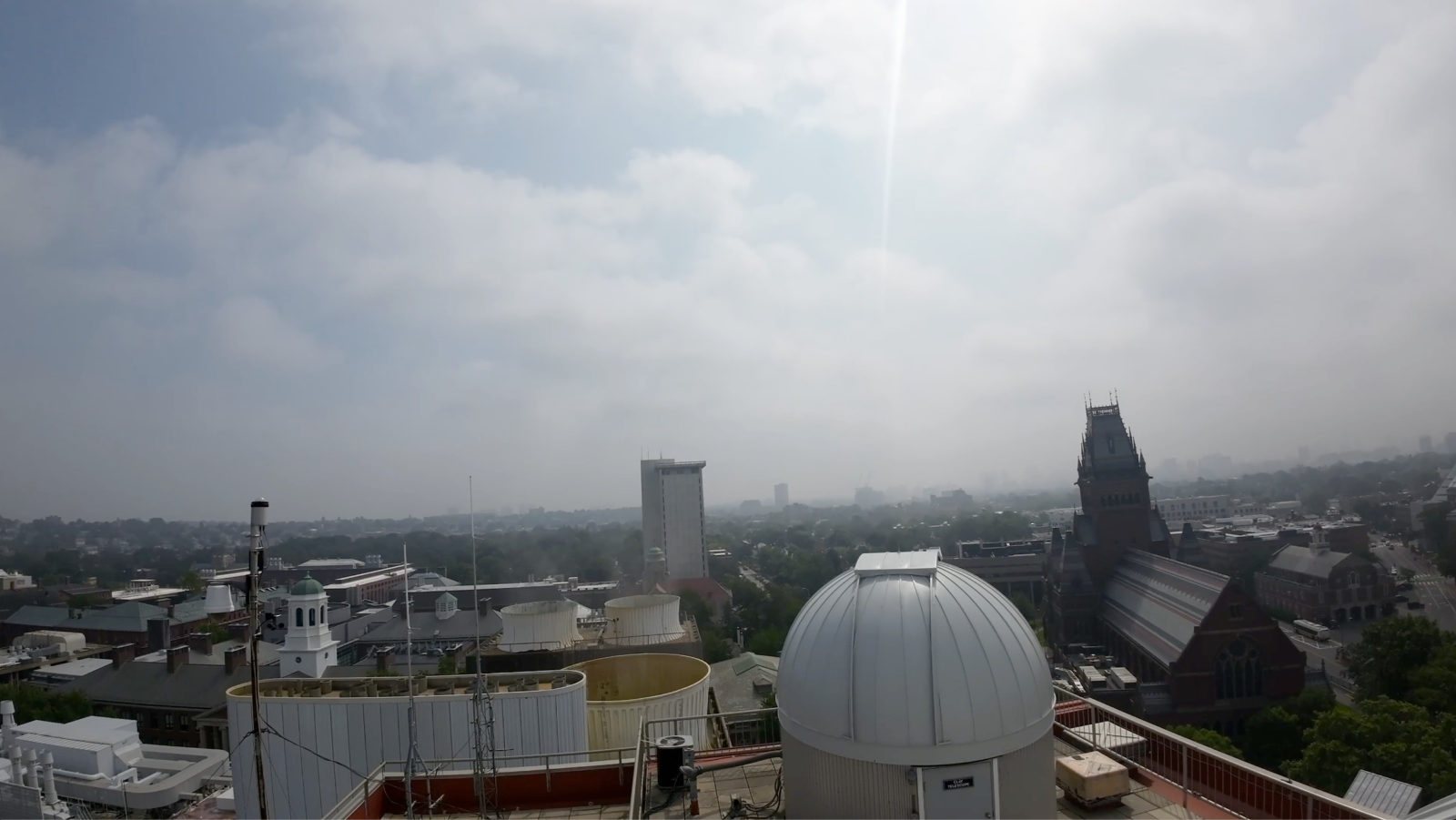The title is the book of John Oxtoby who worked with Stan Ulam at Harvard on the Oxtoby-Ulam theorem. Baire category is a convenient topological way to express when something is typical. A property in a complete metric space is typical if it can be written as an intersection of a countable set of open dense sets. The Category theorem assures then that the set is dense. Baire proved the category theorem in 1899 in Euclidean space. Before that, it was William Fogg Osgood (who taught from 1890 to 1933 at Harvard) who proved the Baire category theorem in R in 1897. [For those who like local gossip, Osgood (1864-1943) had to leave Harvard earlier (and went to Peking) because he had snatched away the wife of Marston Morse. The scandal is described here. After returning from exile in China, he lived until 1943 in Belmont MA. Also for the gossip line is that John Oxtoby (1910-1991) never wrote a PhD as he was a junior fellow at Harvard]
About 25 years ago, I also worked briefly on Ricardo Mane’s last theorem. I had obtained then a handwritten copy of the work of Mane outlining his theorem and after learning about the wonderland theorem of Simon, thought t his might help to prove that outstanding theorem. I never made substancial progress there. [I learned only after talking Saturday morning and looking a bit around in the literature that the last theorem of Mane is now a theorem of Avila, Crovisier and Wilkinson. While in the class of dynamical systems or measure preserving class, weakly mixing is generic, the
case features a dichotomy: one either has partial hyperbolicity with respect to volume or then zero Lyapunov exponents everywhere. Mane’s result had been announced in 1983, the conservative case had been proven by Mane-Bochi 2002 and Bochi-Viana in 2005, the symplectic case is now proven since 2022 by Avila-Crovisier-Wilkinson. I think their theorem should also imply that one should have singular continuous spectrum generically, if one is not in the Anosov case but this seems to be open but very, very likely as we only need a dense set of systems with no ac spectrum and a dense set of systems with no pp spectrum.]
In the smooth symplectic (smooth enough smoothness to have KAM theory apply), one has also quasiperiodic behavior on a set of positive measure (there are open sets of dynamical systems with this type of behavior). From the Lebesgue decomposition theorem one can split the space into 4 different sets:
A) (integrable set) A set on which every invariant ergodic measure has discrete spectrum. This includes periodic points, or invariant tori with induced almost periodic motion. A system can be called integrable, if every ergodic invariant measure has pure point spectrum. (I suggested this notion of integrability in a talk in Birmingham in 2002).
B) (hyperbolic set) A set on which the maximal Lyapunov exponent is positive almost everywhere. By Pesin theory this implies (provided the set has positive measure) that a power of the map is mixing, even Bernoulli and that the metric entropy (Kolmogorov-Sinai entropy) is positive (again provided that the set has positive measure).
C) (weak mixing set) A set on which all Lyapunov exponents are zero and the spectrum is singular continuous. There is no mixing here. This behavior can happen for smooth volume preserving flows on tori. By Mane’s last theorem this behavior is typical if no hyperbolicity is present. By KAM theory, this behavior can not be typical in the smooth case.
D) (mixed spectral type) A set on which the spectral measures have non-trivial decomposition via the Lebsesgue decomposition theorem. Mixed spectral behavior can happen but it is not clear whether this can be typical. The Wonderland theorem and all we know about typical behavior suggest that this mixed spectral type can not happen typically on a set of positive measure, But who knows.
The coexistence picture (first painted by Kolmogorov or Arnold (who coined the vague attractor of Kolmogorov (VAK) picture), is that generically, the two sets A) and B) both have positive volume. One expects that there is a Pesin set of positive measure on which the dynamics has powers that are Bernoulli components and a KAM set of positive measure on which the dynamics is almost periodic. Then there could be a rest with behavior C) or D). In the conservative (Volume preserving smooth diffoemorphisms) case, the picture is less clear because KAM relies on the symplectic structure. Does one have generically a dichotomy BC like in the case or a dichomotomy AB or then typically has a trinity ABC or even ABCD?
Some links:
(1995 Simon: Wonderland theorem )
(1997 Knill: on the general unitary operator)
(1998 Knill: generic weak mixing)
(1998 Hof-Knill: on ODEs on tori)
(1999 Knill: weakly mixing tori )
